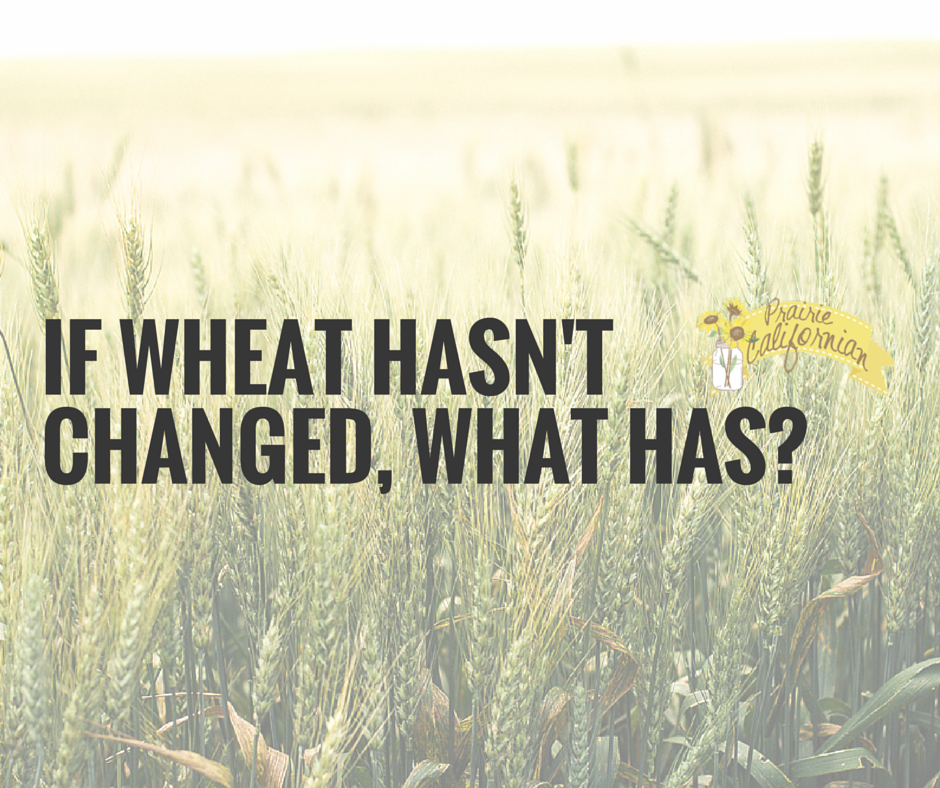
Walk into a grocery store and it has become very clear that gluten-free has officially become a trend. Even products that don’t contain gluten to begin with are labeled. Some manufacturers ever go as far as to label shampoos and soaps gluten free. Although the majority of the population has no problem with gluten, nearly 30% of our developed populations want to eat less gluten. Sales from gluten free products and labeling are estimated to hit $15 billion by 2016 and nearly 18% of adults now buy gluten-free that is an over 50% jump from 2013.
At the heart of it all is this intense fear surrounding wheat. Wheat, a food staple for the starving countries of the world, has now become a demon in many of the developed countries of the world.
But is there any basis for this? Why have we started demonizing wheat?
History of Wheat… Has Wheat Changed?
Many point to the fact that wheat grown today is different than it was before. They claim that the gluten content in wheat has somehow changed. In The History of Wheat, I speak in depth about the origins of wheat. Wheat originated from three different types of wheat, diploid, tetraploid, and hexaploid. You can read more in depth about them here.
In order to get the wheat we know today, two different breeding methods are used. Both methods utilize variations already found in wheat’s lineage. Modern wheat breeding has not created something completely new, the kind of protein (gluten) that is present in our modern wheat varieties is the same protein that has been present in the older varieties that our grandparents and ancestors grew. We haven’t created anything new, it is just a matter of rearranging different gene combinations together.
Case studies have been done on protein content on hard red spring wheat, which is what we grow here on our farm, from 1925-2014 that yield no change in average protein content for nearly 100 years. Donald Kasarda summarizes his findings, “I found no evidence of any obvious trend toward higher protein content for either spring or winter wheats since the early part of the 20th century when the key ancestral varieties of current bread wheats were introduced to the United States.”
So if Wheat Really Hasn’t Changed… What Has?
Our diets and the way we consume grains.
If you actually take a look at the dietary guidelines regarding grains, it states that half (51 percent) of grains should come from whole grains like rice, oatmeal, wheat berries, quinoa, etc. The reality is that only 12% of grain consumption is currently in the form of whole grains. This is absolutely a problem worth looking at, but instead we point to the fact that wheat is somehow evil and avoid it at all costs.
“More than 99% of Americans (aged 2 yrs. and over) are not consuming recommended amounts of whole grains, whereas nearly two-thirds meet or exceed daily intake goals for amounts of grains, including refined grains. The typical American eating pattern includes 1 serving of whole grains per day, which translates to meeting only 15% of whole-grain goal…” (Mobley, A. et al)
Is there some point when we can move beyond throwing the blame on wheat and look at personal responsibility for what we put into our bodies? Or even better, let’s work on education regarding whole grain foods and how to include them in our diets.
The majority of the world’s population has relied upon whole grains as a main proportion of the diet for nearly 3,000-4,000 years. In North America, wheat, oats, barley, and rye were all grown and harvested as staple foods as early as the American Revolution.It is only within the past 100 years that the majority of our population has begun consuming refined grain products. Many consumers today are unaware of the difference between whole grains refined grains, health benefits of whole grains, or the recommendations regarding whole grain intake.
In Whole Grains: Definition, Dietary Recommendations, & Health Benefits, Joanne Slavin, et al. conclude, “Whole grains are now recognized for the entire package of nutrients they provide and the complicated role they play in promoting health. Existing evidence indicates that whole grains have a variety of beneficial health effects. Current evidence lends credence to recommendations to incorporate whole grain foods into a healthy diet pattern and lifestyle.” The Whole Grains Council has compiled pages upon pages of studies pointing to the health benefits of whole grains if you would like to do further reading. I will continue and address on how we can help increase our intake of whole grains versus refined grains.
What is a Refined Grain Product?
According to the American Dietary Guidelines, grains are divided into two subgroups, whole grains and refined grains. Whole grains contain the entire grain kernel — the bran, germ, and endosperm. Recommended whole grain servings can be met with foods in the form of a whole grain, such as oatmeal, brown rice, barley, popcorn, quinoa, wheat berries, millet, rye, sorghum. Many of the same staple grains that were first grown here during the American Revolution.
Refined grains have been milled which removes the bran and the germ. This is done to give grains a finer texture as well as improve their shelf life. The problem with refined grains is that by removing the brand and the germ, it also removes dietary fiber, iron, and many B vitamins. To counteract this, most refined grains are enriched. This means certain B vitamins and iron are added back after processing. Examples of refined grains are white flour, cornmeal, white bread, white rice.
Below is a chart of recommended daily intake. NOTE: Half of your grains should be WHOLE GRAINS.
Now here’s where it gets tricky. Some food products are made from mixtures of whole grains and refined grains. It is fairly straightforward when you’re dealing with 100% whole grains. A dish of brown rice or oatmeal is a whole grain, as is a slice of bread made with no other grain but whole grain. It becomes complicated when a product’s ingredients include both whole grains and refined grains. Depending on where you live, the definition of what is a whole grain ingredient can vary. I will focus on the US definition, but you can lookup definitions for where you live on this chart.
What is a Whole Grain Ingredient?
In the US, whole grain ingredients must meet one of three requirements:
- 1. Contain at least 8g of whole grain content per serving
- 2. 51% of total weight is whole grain
- 3. Have a whole grain as the first ingredient (this one is more complex, but to break it down 50% of the grain must be whole grain)
This sounds sort of confusing, doesn’t it? No wonder people aren’t meeting their standard guidelines. Food Scientists have recognized the confusion here too.
According to a 2013 Article in the American Society for Nutrition entitled The Future of Recommendations on Grain Foods in Dietary Guidance, “Consumer research reveals that Americans are trying to consume more whole grains and fiber, but research also suggests that consumers are confused about whole grains and fiber, with the terms often considered to be synonymous. Adding to this confusion are multiple conflicting definitions for identifying whole-grain products, which may be limiting the ability of consumers to select whole-grain products, thus possibly contributing to the fiber deficit.”
The American Dietary Guidelines have several helpful recommendations outside of increasing consumption of 100% whole grains.
- Choose foods that name one of the following whole-grain ingredients first on the label’s ingredient list: brown rice, buckwheat, bulgur, millet, oatmeal, quinoa, rolled oats, whole grain barley, whole grain corn, whole grain sorghum, whole rye, whole wheat, and wild rice.
- Foods labeled with the words “multi-grain”, “stone-ground”, “100% wheat”, “cracked wheat”, “seven-grain”, or “bran” are not usually whole grain products.
- Color is not an indication of a whole grain. Bread can be brown due to addition of molasses or other added ingredients. Read the ingredient list to see if it is a whole grain.
So How Can We Put More Whole Grains in Our Diets?
Here are a few recommendations, courtesy of American Dietary Guidelines & Whole Grains Council.
- Substitute a whole-grain product for a refined product, such as eating whole-grain bread instead of white bread or brown rice instead of white-rice
- Use whole grains in mixed dishes, such as barley or wheat berries in soups, stews, salads, casseroles, or stir-fry.
- Serve whole grains as a side dish. Make risotto, pilaf and other rice-like dishes with whole grains such as barley, brown rice, bulgur, millet, quinoa or sorghum.
- Substitute whole wheat or oat flour for up to half of the flour in a recipe. Note, you may need a bit more leavening.
- Buy whole grain pasta, or one of the blends that’s part whole-grain, part white.
- Try rolled oats or a crushed whole grain as breading for chicken, fish, pork, or vegetables.
- Eat whole grains for breakfast: oatmeal, brown rice, or wheat berries.
- Cook whole grains ahead of time. Freeze to use in a variety of dishes.
- Popcorn, a whole grain, can be a healthy snack if made with little or no added salt or butter
- Use whole corn meal for corn cakes, corn breads and corn muffins.
- Add three-quarters of a cup of uncooked oats for each pound of ground beef or turkey when you make meatballs, burgers or meatloaf.
- Stir a handful of rolled oats in your yogurt, for quick crunch with no cooking necessary.
Conclusion
I will be the first to admit, I am totally guilty of being in that 99% of Americans not meeting their suggested whole grain intake. I also consume way too much refined grains. I am fully aware that celiac disease is a very real thing and many cannot consume grains because it is danger for them. But if the sales of gluten-free is any indication, we’ve taken this whole fear thing to a whole new level.
At some point we have to take personal responsibility for what we put into our own bodies and take steps towards seeking educating one another and ourselves on the real health benefits of whole grains in our diets. That is one of the reasons I included recipes in this Crop of the Month series, in order to share ideas and recipes including more whole grains.
This topic is one that becomes extremely heated and is more often than not, a challenge to discuss. But it is important that we do have these conversations. I may be a wheat farmer and will advocate for wheat, but I am also a consumer and one who appreciates learning and striving towards a more healthy and balanced diet, much like the rest of you.
Do you enjoy a healthy balance of whole grains in your diet? Have any recommendations or suggestions to add?
Resources
- Carver, B. (2014). Rooting Out Fiction to See the Facts of Today’s Wheat.
- Kasarda, D. (2013). Can an Increase in Celiac Disease Be Attributed to an Increase In the Gluten Content Of Wheat As a Result of Breeding?
- Mobley, A. Slavin, J. Hornick, B. (2013). The Future of Recommedations on Grain Foods in Dietary Guidance.
- Slavin, J. (2004). Whole Grains and Human Health.
- Slavin, J. Tucker, M. et al. (2013). Whole Grains: Definitions, Dietary Recommendations, and Health Benefits.
- USDA. (2014). All About Grains Group.
- Whole Grains Council. (2013). Definitions of Whole Grains.
- Whole Grains Council. (2013). Easy Ways to Enjoy Whole Grains.
- Whole Grains Council. (2013). Existing Standards for Whole Grains.
- Whole Grains Council. (2013). Health Studies on Whole Grains.

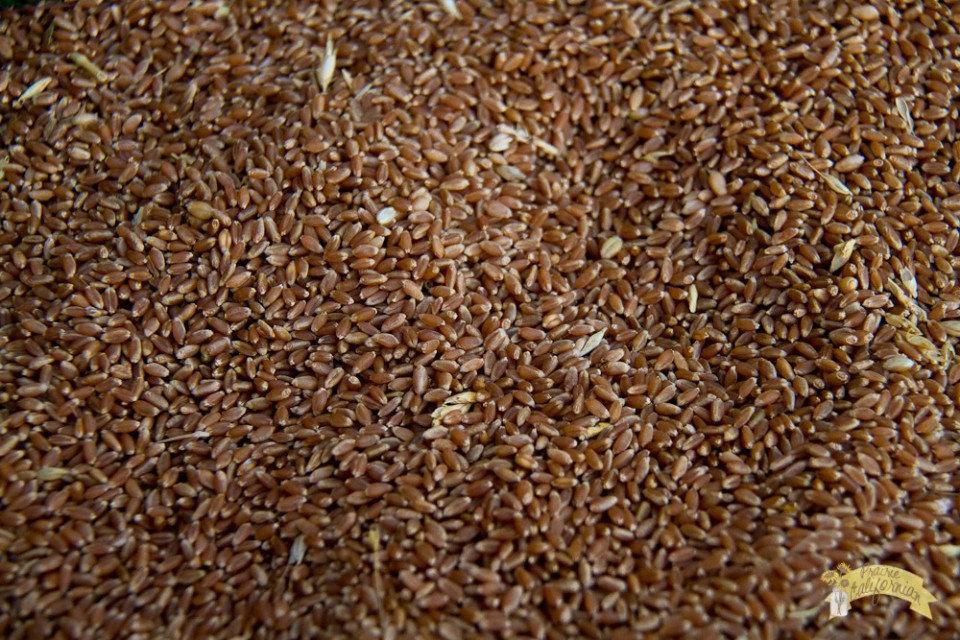
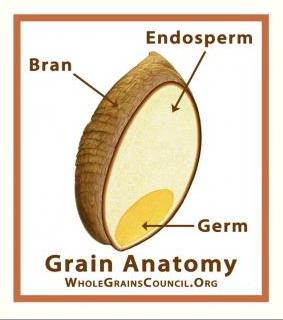

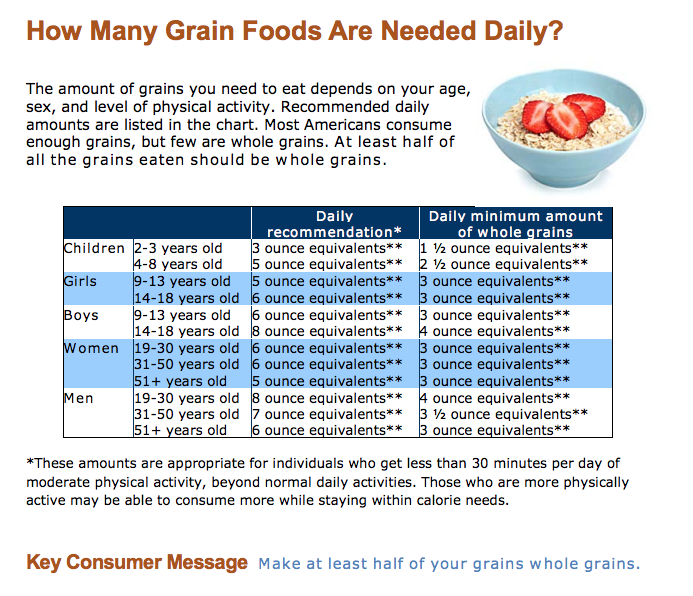
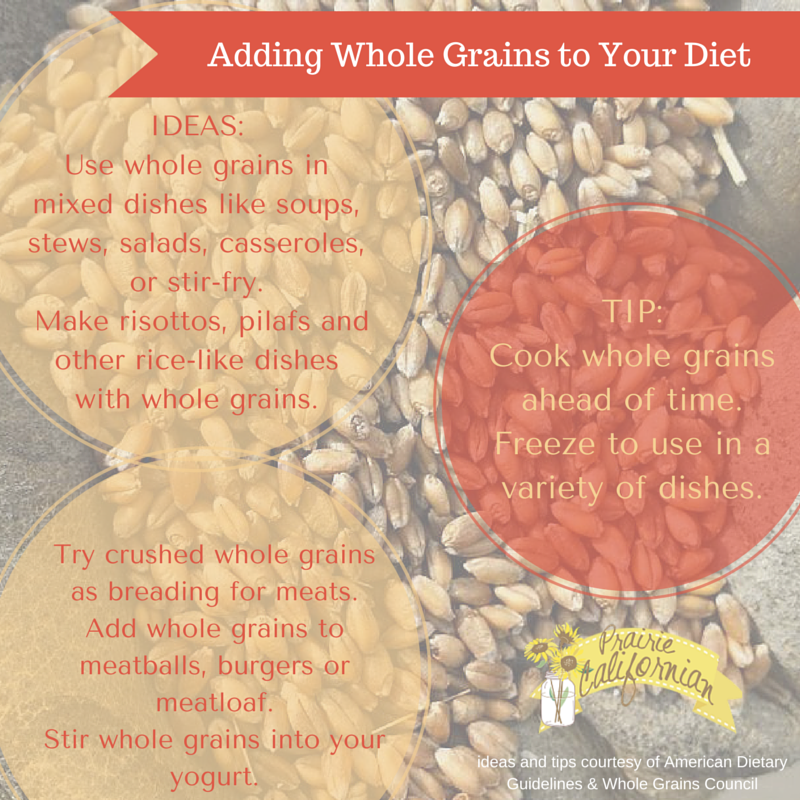
Nicely done!!
Another excellent story. Thanks! Dr. Ravi Chibbar from CA just published an article showing wheat protein hasn’t changed significantly (1%) since 1860, I can send you more info if you want?